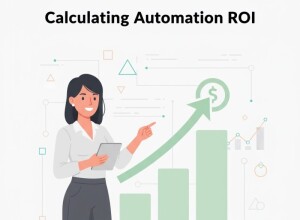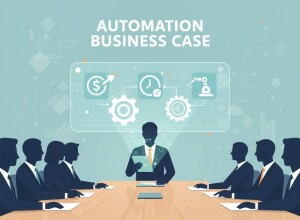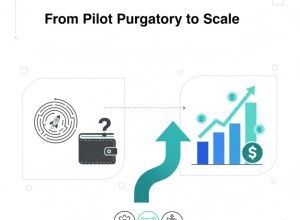KPIs for Digital Twins: Latency, Fidelity, and Business Impact
Digital twins have matured from engineering novelties into operational tools for predictive maintenance, quality control, and process optimization. Yet, many deployments stall because they can’t show measurable value. This guide defines the Key Performance Indicators (KPIs) that reveal whether a digital twin is performing technically and financially—covering latency, fidelity, and impact.
Why Twin KPIs Matter
Without KPIs, twins drift from reality and lose trust. A twin that updates too slowly or predicts too vaguely adds cost without insight. Clear metrics align engineers, IT, and management around what success looks like: a twin that’s accurate enough, fast enough, and valuable enough to justify its lifecycle cost.
Three KPI Categories
The performance of a digital twin can be measured on three levels:
- 1. Technical KPIs: Speed, accuracy, stability, and data freshness.
- 2. Operational KPIs: Utilization, coverage, and synchronization uptime.
- 3. Business KPIs: Financial ROI, risk reduction, and OEE impact.
Technical KPIs: Latency and Fidelity
- Data Latency: Time difference between a real event (sensor or MES update) and its reflection in the twin. Target: <5s for operations, <1s for controls, <1min for analytics twins.
- Simulation Step Time: How long one model update cycle takes. Determines responsiveness in HIL or virtual commissioning (see Virtual Commissioning).
- Model Fidelity: Quantified by error rate between simulated and real KPIs (throughput, energy, temperature). Target: ±5–10% for production twins.
- Synchronization Rate: Percentage of live data points updated within defined latency window. Aim for ≥95% uptime.
Operational KPIs: Adoption and Coverage
- Asset Coverage: Share of production assets represented by twins (full or partial). A good starting point: 20–30% of critical equipment.
- Scenario Utilization: Number of “what-if” or optimization runs per month—indicates engagement from process engineers.
- Validation Frequency: How often the twin is recalibrated with real plant data. Recommended: every 3–6 months.
- Integration Depth: Number of systems exchanging live data (e.g., MES, historian, CMMS). The higher, the more sustainable the twin.
Business KPIs: Proving the Value
Ultimately, a twin justifies itself by the results it drives. Typical business KPIs include:
- OEE Improvement: Availability + Performance + Quality uplift after twin deployment.
- Downtime Avoidance: Hours of unplanned downtime prevented through predictive scenarios.
- Engineering Hours Saved: Time reduction in commissioning or design change validation.
- Energy Optimization: Percentage of consumption reduction from scenario-based tuning.
- ROI: (Annual savings – annual operating cost) ÷ investment. Target ROI ≥ 2× within 18 months.
Balanced KPI Dashboard Example
A practical twin KPI dashboard should combine live technical metrics and business results:
| KPI | Target | Measurement Source |
|---|---|---|
| Data Latency | < 5 s | Historian / message queue timestamps |
| Model Fidelity | < ±10 % deviation | Throughput and energy comparison |
| Scenario Utilization | > 10 per month | Twin orchestration logs |
| OEE Improvement | > +5 % | MES reports |
| ROI | > 200 % | Finance / asset management |
Case Example: Food Packaging Plant
A food manufacturer measured twin ROI using these KPIs. After integrating MES and historian data into a logical twin, OEE rose 6.8% in six months. Average latency dropped from 14s to 4s, and fidelity improved from ±12% to ±6%. The financial return reached 2.7× within the first year, with 60% reduction in time spent on changeover planning.
Governance and KPI Ownership
To sustain results, assign KPI ownership explicitly:
- Engineering: Technical KPIs (latency, fidelity, update rate)
- Operations: Operational KPIs (coverage, usage)
- Management: Business KPIs (ROI, OEE, cost savings)
This separation prevents focus drift and ensures that improvements at one level don’t degrade another.
Linking to Maturity Models
As twins evolve from pilot to scale, KPI targets change:
- Pilot phase: Focus on latency and fidelity (prove feasibility).
- Expansion phase: Track coverage and utilization (prove scalability).
- Operational phase: Measure ROI and OEE improvement (prove sustainability).
Maturity frameworks should include these metrics explicitly to guide investment decisions.
Q&A
Can KPIs be automated?
Yes. Modern MES and historians can timestamp events automatically. Scripts or analytics tools can compute latency, fidelity, and usage KPIs continuously.
What’s an acceptable model error?
For operational decisions, ±10% deviation is acceptable. For safety-critical or energy-intensive processes, ±3–5% is preferable.
When do KPIs become obsolete?
When the twin shifts purpose—e.g., from design validation to predictive operations. KPI sets must evolve with lifecycle phase.
Related Articles
- The Practical Digital Twin: What to Model, What to Ignore
- Marrying MES with the Twin: Feedback Loops That Drive OEE
- Virtual Commissioning for Faster Startups: PLC, HIL, and Twin Integration
Conclusion
Digital twins must be managed like assets—with KPIs tracking technical performance, operational adoption, and financial value. By quantifying latency, fidelity, and impact, manufacturers can move from “we built a twin” to “this twin improves results.” Clear metrics turn digital twin programs into measurable, fundable, and scalable business enablers.









































Interested? Submit your enquiry using the form below:
Only available for registered users. Sign In to your account or register here.